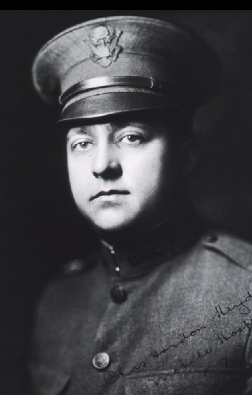Fluoride is an inorganic, monatomic anion of fluorine, with the chemical formula F−
, whose salts are typically white or colorless. Fluoride salts typically have distinctive bitter tastes, and are odorless. Its salts and minerals are important chemical reagents and industrial chemicals, mainly used in the production of hydrogen fluoride for fluorocarbons. Fluoride is classified as a weak base since it only partially associates in solution, but concentrated fluoride is corrosive and can attack the skin.

Drinking water or potable water is water that is safe for ingestion, either when drunk directly in liquid form or consumed indirectly through food preparation. It is often supplied through taps in which case it is also called tap water. Typically in developed countries, tap water meets drinking water quality standards, even though only a small proportion is actually consumed or used in food preparation. Other typical uses for tap water include washing, toilets, and irrigation. Greywater may also be used for toilets or irrigation. Its use for irrigation however may be associated with risks.

Water fluoridation is the controlled adjustment of fluoride to a public water supply solely to reduce tooth decay. Fluoridated water contains fluoride at a level that is effective for preventing cavities; this can occur naturally or by adding fluoride. Fluoridated water operates on tooth surfaces: in the mouth, it creates low levels of fluoride in saliva, which reduces the rate at which tooth enamel demineralizes and increases the rate at which it remineralizes in the early stages of cavities. Typically a fluoridated compound is added to drinking water, a process that in the U.S. costs an average of about $1.26 per person-year. Defluoridation is needed when the naturally occurring fluoride level exceeds recommended limits. In 2011, the World Health Organization suggested a level of fluoride from 0.5 to 1.5 mg/L, depending on climate, local environment, and other sources of fluoride. Bottled water typically has unknown fluoride levels.
Fluoride toxicity is a condition in which there are elevated levels of the fluoride ion in the body. Although fluoride is safe for dental health at low concentrations, sustained consumption of large amounts of soluble fluoride salts is dangerous. Referring to a common salt of fluoride, sodium fluoride (NaF), the lethal dose for most adult humans is estimated at 5 to 10 g. Ingestion of fluoride can produce gastrointestinal discomfort at doses at least 15 to 20 times lower than lethal doses. Although it is helpful topically for dental health in low dosage, chronic ingestion of fluoride in large amounts interferes with bone formation. In this way, the most widespread examples of fluoride poisoning arise from consumption of ground water that is abnormally fluoride-rich.

Sodium fluoride (NaF) is an inorganic compound with the formula NaF. It is a colorless or white solid that is readily soluble in water. It is used in trace amounts in the fluoridation of drinking water to prevent tooth decay, and in toothpastes and topical pharmaceuticals for the same purpose. In 2020, it was the 265th most commonly prescribed medication in the United States, with more than 1 million prescriptions. It is also used in metallurgy and in medical imaging.
The water fluoridation controversy arises from political, ethical, economic, and health considerations regarding the fluoridation of public water supplies.

Fluoride therapy is the use of fluoride for medical purposes. Fluoride supplements are recommended to prevent tooth decay in children older than six months in areas where the drinking water is low in fluoride. It is typically used as a liquid, pill, or paste by mouth. Fluoride has also been used to treat a number of bone diseases.

Dental fluorosis is a common disorder, characterized by hypomineralization of tooth enamel caused by ingestion of excessive fluoride during enamel formation.

Henry Trendley Dean was the first director of the United States National Institute of Dental Research and a pioneer investigator of water fluoridation in the prevention of tooth decay.

Mark Diesendorf is an Australian academic and environmentalist, known for his work in sustainable development and renewable energy. He currently teaches environmental studies at the University of New South Wales, Australia. He was formerly professor of environmental science and founding director of the Institute for Sustainable Futures at the University of Technology, Sydney and before that a principal research scientist with CSIRO, where he was involved in early research on integrating wind power into electricity grids. His most recent book is Sustainable Energy Solutions for Climate Change.

Dental Public Health (DPH) is a para-clinical specialty of dentistry that deals with the prevention of oral disease and promotion of oral health. Dental public health is involved in the assessment of key dental health needs and coming up with effective solutions to improve the dental health of populations rather than individuals.

Water fluoridation is the controlled addition of fluoride to a public water supply to reduce tooth decay, and is handled differently by country. Fluoridated water has fluoride at a level that is proven effective for preventing cavities; this can occur naturally or by adding fluoride. Fluoridated water operates on tooth surfaces: in the mouth it creates low levels of fluoride in saliva, which reduces the rate at which tooth enamel demineralizes and increases the rate at which it remineralizes in the early stages of cavities. Typically a fluoridated compound is added to drinking water, a process that in the U.S. costs an average of about $1.26 per person-year. Defluoridation is needed when the naturally occurring fluoride level exceeds recommended limits. In 2011 the World Health Organization suggested a level of fluoride from 0.5 to 1.5 mg/L, depending on climate, local environment, and other sources of fluoride. Bottled water typically has unknown fluoride levels.
Hardy Limeback is a Canadian retired full professor and former head of preventive dentistry at the University of Toronto. He received his PhD in collagen biochemistry and his DDS from the University of Toronto. Limeback was one of the twelve panelists who served on the 2006 US National Academies of Sciences/National Research Council's committee on Fluoride in Drinking Water: A Scientific Review of EPA's Standards. He has authored or coauthored over 100 publications on dentistry.

Tooth remineralization is the natural repair process for non-cavitated tooth lesions, in which calcium, phosphate and sometimes fluoride ions are deposited into crystal voids in demineralised enamel. Remineralization can contribute towards restoring strength and function within tooth structure.

As with some other countries, water fluoridation in the United States is a contentious issue. As of May 2000, 42 of the 50 largest U.S. cities had water fluoridation. On January 25, 1945, Grand Rapids, Michigan, became the first community in the United States to fluoridate its drinking water to prevent tooth decay.

Australia is one of many countries that have water fluoridation programs currently operating. As of March 2012, artificially fluoridated drinking water is administered to 70% or more of the population in all states and territories. The acceptance of the benefits of water fluoridation occurred in Australia in December 1953, roughly two years after acceptance in the United States. Many of Australia's drinking water supplies subsequently began fluoridation in the 1960s and 1970s. By 1984 almost 66% of the Australian population had fluoridated drinking water, represented by 850 towns and cities. Some areas within Australia have natural fluoride levels in the groundwater, which was estimated in 1991 to provide drinking water to approximately 0.9% of the population.
In the city of Hamilton, New Zealand, elections were held for the offices of Mayor of Hamilton and twelve members of the Hamilton City Council (HCC) on 12 October 2013. They were held as part of the 2013 New Zealand local elections. Referendums on city water fluoridation and to determine voting method for electing city councillors in the future were held simultaneously. Postal ballots were issued to 97,259 registered voters, and were returned from 23 September to 12 October 2013. Across the city, 37,276 people cast votes, a voter turnout of 38.33%. Some voters chose not to vote in particular elections or referendums, so voter turnout in individual elections varies from this figure.

The Informed Medical Options Party, formerly known as the Involuntary Medication Objectors (Vaccination/Fluoride) Party, was an Australian political party. The party's policies opposed compulsory vaccination programs and water fluoridation. The Party states that these are "mass-medication programs" where there is "genuine scientific uncertainty about the benefits and risks in a genetically diverse population". Australian Medical Association president Tony Bartone said the party's views "lack the backing of scientific evidence" and that its members "should consider the harm that can ensue upon the Australian community". It was registered for federal elections on 26 October 2016.
Operation Omega was a London-based group that took humanitarian aid into East Pakistan during the 1971 Bangladesh genocide. Several members of the group were arrested and two were imprisoned for their actions.

Charles Gordon Heyd was an American surgeon and president of the American Medical Association in 1936–1937.













